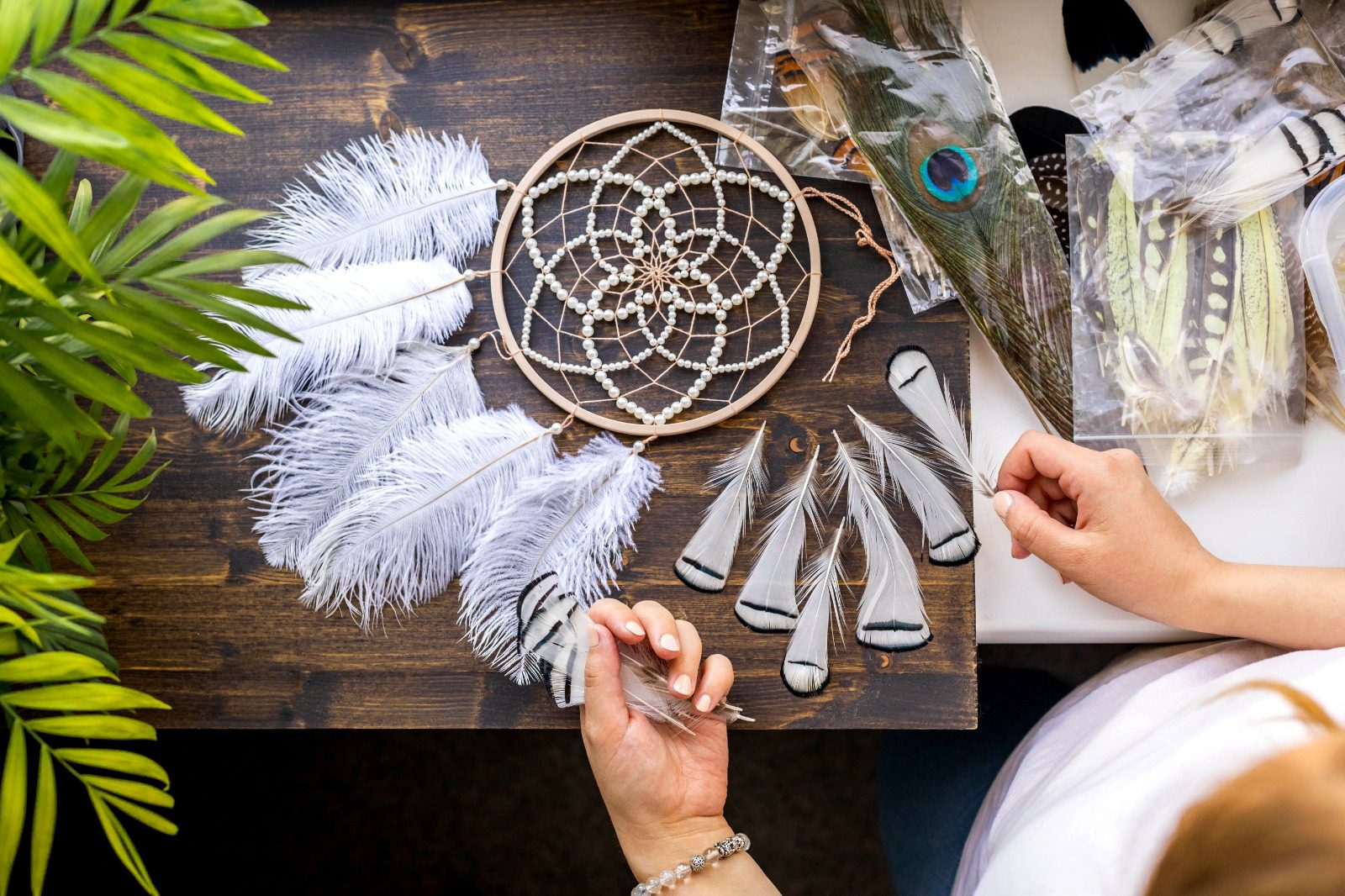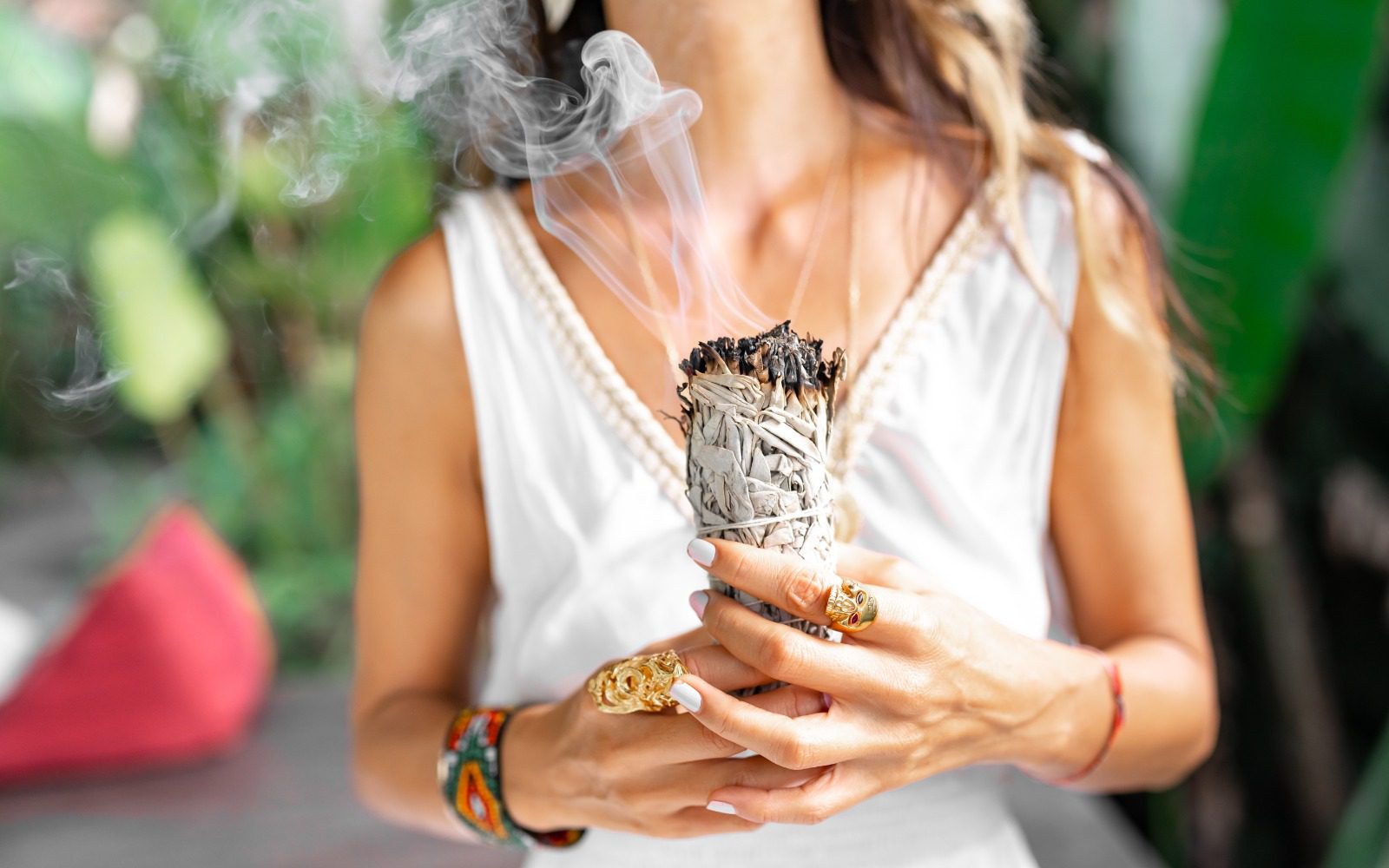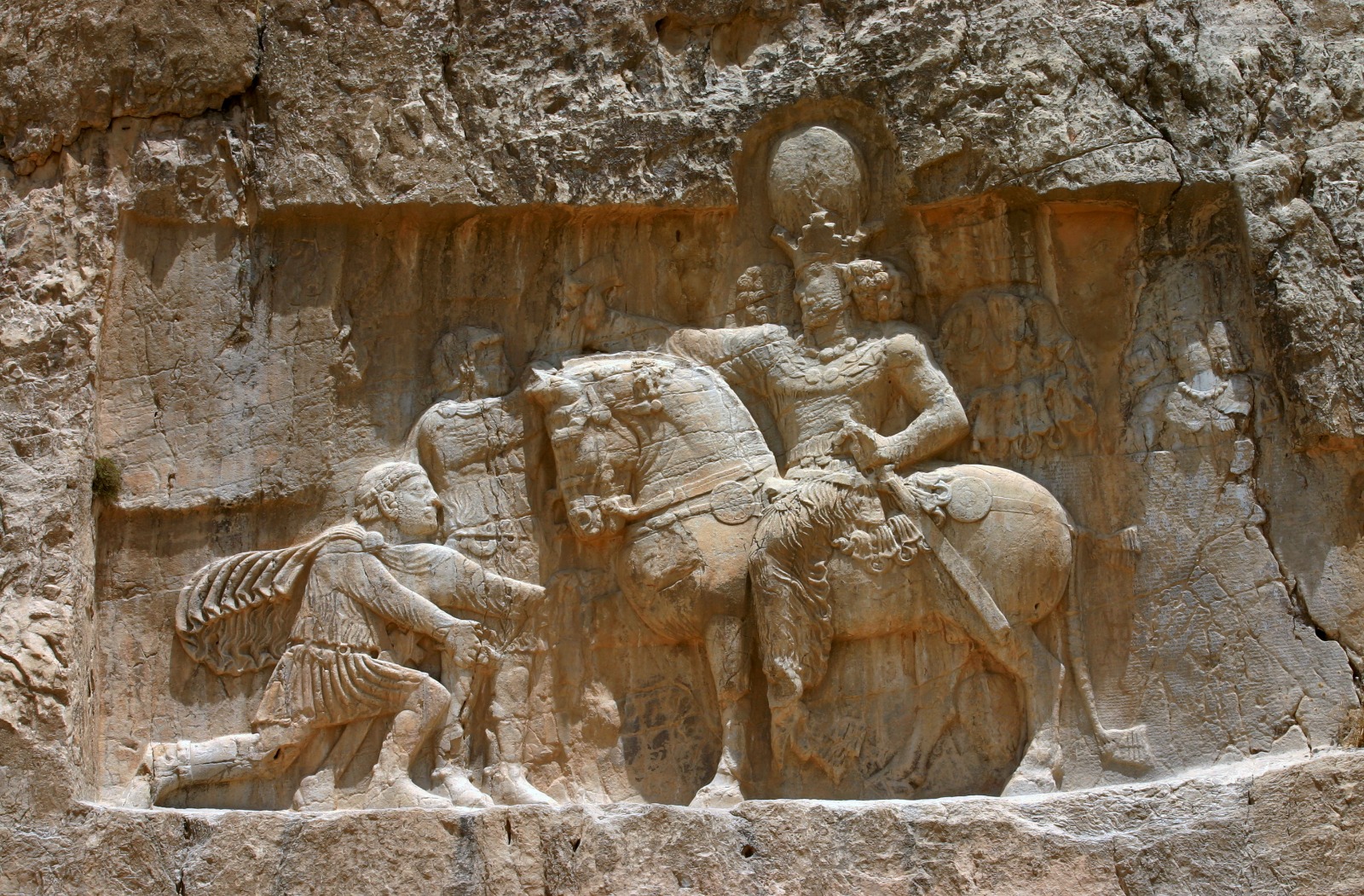
Legend has it that long ago, among the Ojibwe people, a tribe known for their deep spiritual beliefs and connection to nature, there was a spiritual leader named Asibikaashi. She was known as the Spider Woman, a figure of great reverence, tasked with the sacred duty of protecting her tribe from nightmares and evil spirits. As the Ojibwe people, who believed in the interconnectedness of all living beings, began to spread across the land, Asibikaashi found it increasingly difficult to reach every member of her tribe to safeguard their dreams.
She devised a clever solution in her wisdom—a protective charm crafted from the natural world, imbued with the power to filter dreams and allow only the good ones to pass through. Thus, the dreamcatcher was born.
Traditionally, dreamcatchers were made using a circular frame fashioned from willow branches, representing the interconnectedness of all living beings. A web was intricately woven within this frame, resembling a spider’s delicate workmanship. This web was believed to capture negative energies and nightmares, preventing them from disturbing the dreamer’s peaceful slumber.
A hole was left open at the center of the dreamcatcher to allow positive dreams to pass through and gently descend upon the sleeper like morning dew. Often, feathers were attached to this opening, symbolizing breath, air, and the vital essence of life.
Asibikaashi instructed her people to hang these enchanting creations above their sleeping quarters. They would serve as guardians of the night, ensuring that only the most uplifting and enlightening dreams were permitted to enter the realm of sleep.
Over time, the dreamcatcher tradition spread beyond the Ojibwe nation and was embraced by many indigenous tribes across North America. Each tribe added unique touches to the design, infusing the dreamcatcher with layers of cultural significance and spiritual resonance.

Today, the dreamcatcher remains a beloved symbol of protection, wisdom, and unity, cherished by people worldwide. Whether hung above a bed, adorning a car mirror, or worn as jewelry, it serves as a reminder of the enduring power of ancient traditions and the enduring human quest for peace and harmony.
As we gaze upon the delicate threads of a dreamcatcher, let us not only marvel at its beauty but also honor the profound legacy of the Spider Woman and the wisdom of the indigenous peoples who entrusted us with this sacred artifact—a beacon of hope in the darkness, guiding us toward a brighter tomorrow.
Preparing a dreamcatcher is a wonderfully creative and symbolic process that allows you to connect with its rich cultural heritage while crafting a unique talisman tailored to your tastes and intentions. Here’s a step-by-step guide to creating your very own dreamcatcher:
Materials Needed
1. A hoop or circular frame (traditionally made from willow branches, but you can also use metal or plastic hoops)
2. Suede lace, yarn, or string for wrapping the hoop
3. Thin, flexible wire or string for weaving the web
4. Beads, feathers, and other decorative elements
5. Scissors
6. Optional: glue, paint, or markers for additional decoration
Instructions
1. Prepare the Hoop: If you’re using a wooden hoop, you may want to wrap it with suede lace, yarn, or string to give it a decorative and secure base. Start by tying one end of the lace to the hoop, wrapping it tightly around the entire circumference, and securing the loose end with a knot or glue.
2. Create the Web: Cut a long piece of string or thin wire approximately 1.5 times the diameter of your hoop. Tie one end of the string to the hoop, leaving a tail of about 6 inches to hang decorative elements later. This will be your starting point for weaving the web.
3. Begin Weaving: With the string attached to the hoop, start creating the inner circle of the web by making a series of loops around the hoop, spacing them evenly apart. You can use your fingers or a small object (like a pen or pencil) to hold the loops in place as you work around the hoop.
4. Continue Weaving: Once you’ve completed the inner circle, begin weaving the web by diagonally passing the string across the loops’ center, creating a crisscross pattern. Continue weaving in this manner until you reach the center of the dreamcatcher.
5. Finish the Web: When you’ve reached the center, tie off the string securely and trim any excess. You should now have a web-like pattern within the hoop, resembling the traditional design of a dreamcatcher.
6. Add Decorative Elements: Now it’s time to personalize your dreamcatcher! Using additional string or glue, attach beads, feathers, shells, or other decorative elements to the bottom of the dreamcatcher. These elements not only add beauty but also carry symbolic meaning and significance.
7. Hang and Bless: Once your dreamcatcher is complete, find a special place to hang it where it can fulfill its protective role. Before hanging, you may bless your dreamcatcher with positive intentions or a simple prayer, honoring its spiritual significance.
Creating a dreamcatcher is a meaningful and meditative process. It allows you to tap into your creativity while honoring the ancient traditions and symbolism associated with this cherished artifact. Enjoy the journey as you craft a unique piece of art infused with positive energy and intention.
Using a dreamcatcher goes beyond its mere physical presence; it involves embracing its symbolism and incorporating it into your daily life as a mindfulness, protection, and intention-setting tool. Here are some ways to use a Dreamcatcher effectively:
1. Hang it above your bed: Dreamcatchers are hung above sleeping areas to filter out negative dreams and energies while allowing positive ones to pass through. Place it where it’s visible from your bed, allowing it to serve as a symbolic guardian of your sleep.
2. Set intentions: Before going to bed, take a moment to reflect on your intentions or desires for the night. Visualize positive dreams and experiences while acknowledging any worries or negative thoughts you may want to release. As you drift off to sleep, trust the dreamcatcher to filter out unwanted energies and guide you toward uplifting dreams.
3. Use it for meditation: Incorporate your dreamcatcher into your meditation practice by sitting or lying beneath it while you meditate. Allow its presence to deepen your relaxation and connection to your inner self. You can also use it as a focal point for visualization exercises, imagining your dreams manifesting within its protective web.
4. Decorate your space: Beyond its practical function, a dreamcatcher can also be a decorative element in your home or workspace. Hang it in a place where you spend the day, such as near a window or above a reading nook, to infuse the space with positive energy and symbolism.
5. Recharge and cleanse: Periodically, cleanse and recharge your dreamcatcher to maintain its effectiveness. You can do this by gently blowing smoke from sage, palo santo, or other cleansing herbs over it, visualizing any accumulated negative energies being released. Alternatively, you can place it in sunlight or moonlight to absorb positive energy and rejuvenate its protective qualities.
6. Gift it with intention: Consider giving a dreamcatcher a thoughtful gift to someone special, imbuing it with your intentions for their well-being and protection. Encourage them to hang it in a prominent place, where it can serve as a constant reminder of your care and support.
Ultimately, how you use a dreamcatcher is deeply personal and can vary based on your beliefs, practices, and intentions. Whether you see it as a spiritual tool, a piece of art, or simply a charming decoration, allow it to enrich your life with its beauty, symbolism, and protective energy.

In conclusion, the dreamcatcher is a powerful symbol of protection, mindfulness, and cultural heritage. Originating from Native American traditions, it has transcended time and geography to become a beloved talisman embraced by people worldwide.
Crafting and using a dreamcatcher is not merely a creative endeavor but a deeply meaningful practice that invites us to connect with ancient wisdom and the natural world. Whether hung above our beds as guardians of sleep, incorporated into meditation and intention-setting rituals, or displayed as decorative art, dreamcatchers carry the essence of hope, positivity, and spiritual connection.


Harnessing the Power of Sage: Exploring Its Benefits Beyond the Culinary Realm
Sage, a plant steeped in a rich history spanning centuries, is a culinary herb and a versatile botanical treasure.

A Journey through the History of the Evil Eye
Few symbols hold as much intrigue and evoke as many questions in folklore and superstition as the “Evil Eye.”
instagram:
Error: No feed found.
Please go to the Instagram Feed settings page to create a feed.


